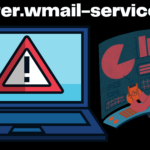Navigating the Cookieless Future: Strategies for Marketers

Digital marketers have relied on cookies for valuable insights into user behavior and targeted advertising for years. However, significant changes are on the horizon. With browsers like Mozilla Firefox and Apple Safari already blocking third-party cookies and Google announcing its plans to follow suit, the era of cookie-based marketing is rapidly ending.
In this blog post, we will explore the implications of this shift and strategies for marketers to thrive in a cookieless landscape.
1. Cookies Explained
Before we delve into the implications of a ‘cookieless’ future, it is crucial to grasp the concept of cookies and their impact on user interaction. Cookies, despite storing non-personal information about web browsing activity, are a significant tool in data mining and analysis, offering companies valuable insights into their customers’ needs. They play a vital role in web functionality, analytics, performance tracking, and targeted advertising.
Tracking cookies is critical for marketing efforts because it helps us understand what people like, allows businesses to utilize personalized adverts, and ensures conversions are measured. Nonetheless, privacy issues and data security are reasons people worry about cookie-tracking methods.
2. What is Cookieless Attribution?
Cookie-less attribution is a process that tracks user interactions and measures conversions without relying on traditional cookies. Marketers can gather data anonymously through tools like device fingerprinting and magnet-side tracking, thereby protecting users’ privacy. This method ensures that data collection and analysis can continue in a cookieless future.
The device fingerprinting process exploits factors such as IP addresses, browser configurations, and device attributes to classify browsers and users. Therefore, users can be identified and tracked using different devices and sessions. Client-side tracking radically diverges from server-side tracking in that data is sent from the server directly to analytics platforms, thus making the utilization of client-side cookies unnecessary.
3. Why Are Third-Party Cookies Going Away & Why Does it Matter?
Many major browsers are simply eliminating third-party cookies to provide users with enhanced privacy and protection against exploitation and malicious cyber activities. With this change, marketers are faced with difficulties centered on their strategies of cookie tracking and targeting users. Google’s Privacy Sandbox project targets an innovative approach to data collection while focusing on resolving issues around people’s privacy.
The demise of third-party cookies will indeed have a profound impact on advertising, as it will deprive marketers of the ability to track user behavior across multiple websites and platforms. This shift will undoubtedly spur the development of innovative targeting and measurement technologies. As a result, PPC marketing company will need to adapt its strategies to navigate this changing landscape effectively.
4. How Are Industry Professionals Preparing for The Loss of Third-Party Cookies?
Some marketers envision dramatic changes when third-party cookies are no longer on the scene. The main steps towards effective transition management are leveraging talents and resources, investing in data science, attracting market research, and developing new attribution models.
Enhancing the data analytics and capabilities capacity can be successfully achieved by relying on available first-party data sources, including (CRM) platforms, email lists, and website statistics. These methods can gather information about the users’ behavior and motives. Becoming familiar with marketing research is a critical aspect of marketing management wherein marketers get more acquainted with their potential audience and adjust their approaches accordingly.
The production of different attribution models requires adopting methods consisting of multi-touch attribution, which assigns the credit to all the touchpoints along the customer journey, and algorithmic attribution, which uses machine algorithms to analyze user data and establish what constrains the influence upon it.
5. How Does Marketing Without Cookies Work?
However, cookieless does not imply that the ecosystem has no data. It means that marketers can still use first-party and anonymized data for ad targeting and consumer insights. For instance, a trick like device fingerprinting is a method of collecting data that does not require users to provide their privacy.
First-party data sources, such as customer interactions with the website, email communications, social media interactions, and offline interactions, remain the backbone of information and trends. By analyzing this data, marketers can gain a deep understanding of users’ activities, choices, and what influences their buying decisions, even in a cookieless landscape.
Anonymized data pool refers to the pooling and anonymization of user data. This approach ensures user privacy while enabling targeted advertising and measurement. By aggregating data and preserving anonymity, marketers can uncover patterns and trends, enhancing decision-making while addressing privacy concerns. This evolution is particularly crucial for search engine optimization in Mississauga, as marketers seek alternative methods to understand user behavior and preferences.
6. 4 Tips to Prepare for Cookieless Marketing
a. Master Google Analytics 4: Move to Google Analytics 4 and use server-side tagging for precise tracking. YouTube automatically starts playing videos when people visit the site or get recommended videos in search results.
b. Use First-Party Data: Use questionnaires, sign-up forms, and email subscriptions to collect relevant data directly from users.
c. Invest More in Market Research: To avoid unrelated products, you need to know your consumer by buying surveys and analytics.
d. Rethinking PPC (Paid Per Click): Shift the PPC strategies toward AI-driven bidding, performance assessment on different KPIs such as visibility, cost per action, etc., and using advanced options like contextual advertising and targeting based on location and time.
Conclusion
The transition to a cookieless future underscores the importance of user privacy. As digital marketers, it is our responsibility to adapt and thrive in this evolving landscape by embracing alternative data collection methods, refining targeting strategies, and prioritizing user privacy.
By incorporating these strategies and staying informed about industry developments, digital marketers can confidently navigate the cookieless future and continue to drive impactful marketing campaigns. This transition also presents an opportunity for continuous learning and growth in our field.

































































